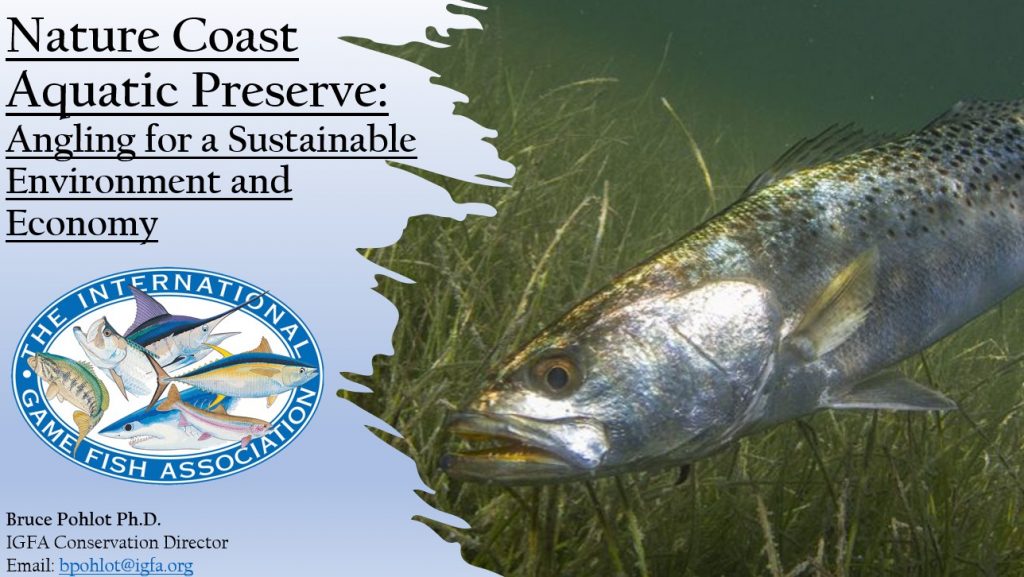Stakeholder Input Drives Creation of
Nature Coast Aquatic Preserve (AP)


In December 2022, IGFA Conservation Director Dr. Bruce Pohlot travelled to New Orleans, Louisiana, USA, for the 2022 Coastal and Estuarine Summit hosted by Restore America’s Estuaries to present on the importance of recreational fishing to the US and Florida, as well as IGFA’s perspective of how stakeholder input drove the creation of the Nature Coast Aquatic Preserve and is currently driving its management plan development. Pohlot was joined by other stakeholders from the fishing, scientific, government, and conservation communities whom each presented their perspectives on the AP.

Back in June of 2020, as the world was in the midst of a pandemic, some very important legislation was happening in Florida. On June 29, 2020, Florida Governor Ron DeSantis signed legislation (HB 1061), creating the Nature Coast Aquatic Preserve in Citrus, Hernando, and Pasco counties following an outpouring of support from local businesses, county commissioners, conservation groups, and recreational and marine industry organizations.
Aquatic preserves (APs) in Florida safeguard water quality, habitat, recreation, and cultural heritage. APs also receive an Outstanding Florida Water Designation, which is the highest level of state protection with the goal of maintaining good water quality which is essential to healthy ecosystems and marine communities. Most importantly, they support traditional public use such as recreational and commercial fishing, boating, and swimming. The new AP in Citrus, Hernando, and Pasco counties was the first in over 30 years and represents the 42nd in the Florida state system, a major step forward in conserving Florida’s status as The Fishing Capital of the World into the future.
The IGFA was instrumental in gaining support for the new AP by assembling a coalition of leading recreational, conservation and marine manufacturing organizations. The new AP filled the gap between existing APs to the north and south and protects over 400,000 acres of prime seagrass habitat as well as other critical ecosystems in the Gulf of Mexico. The IGFA has continued to be involved in the development of the management plan that will include critical monitoring and other projects to ensure the region remains pristine. We hope to see the final approval of the management plan in early 2023!
Seventy percent of Florida’s renowned sport fish, such as gag grouper, spotted seatrout, snook, redfish, tarpon, and gray snapper spend at least part of their life cycle within seagrass habitat as well as in some of the other habitats within the AP such as mangrove forests, sponge fields, and oyster reefs. These species support extremely valuable recreational fisheries, bait production, tackle shops, marinas, boat builders, and fishing-related tourism that contribute to the more than $600,000,000 annually by the Nature Coast region’s ocean-related economy.
The creation and subsequent management of the Nature Coast AP can be viewed as a model for how conservation legislation should work. When different stakeholder groups can find issue agreement, take ownership of the resource, and work side by side to create a meaningful, positive impact on the environment, it is a win-win scenario.
